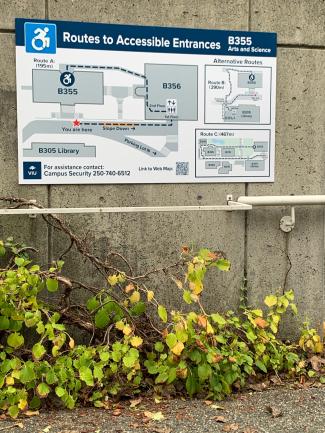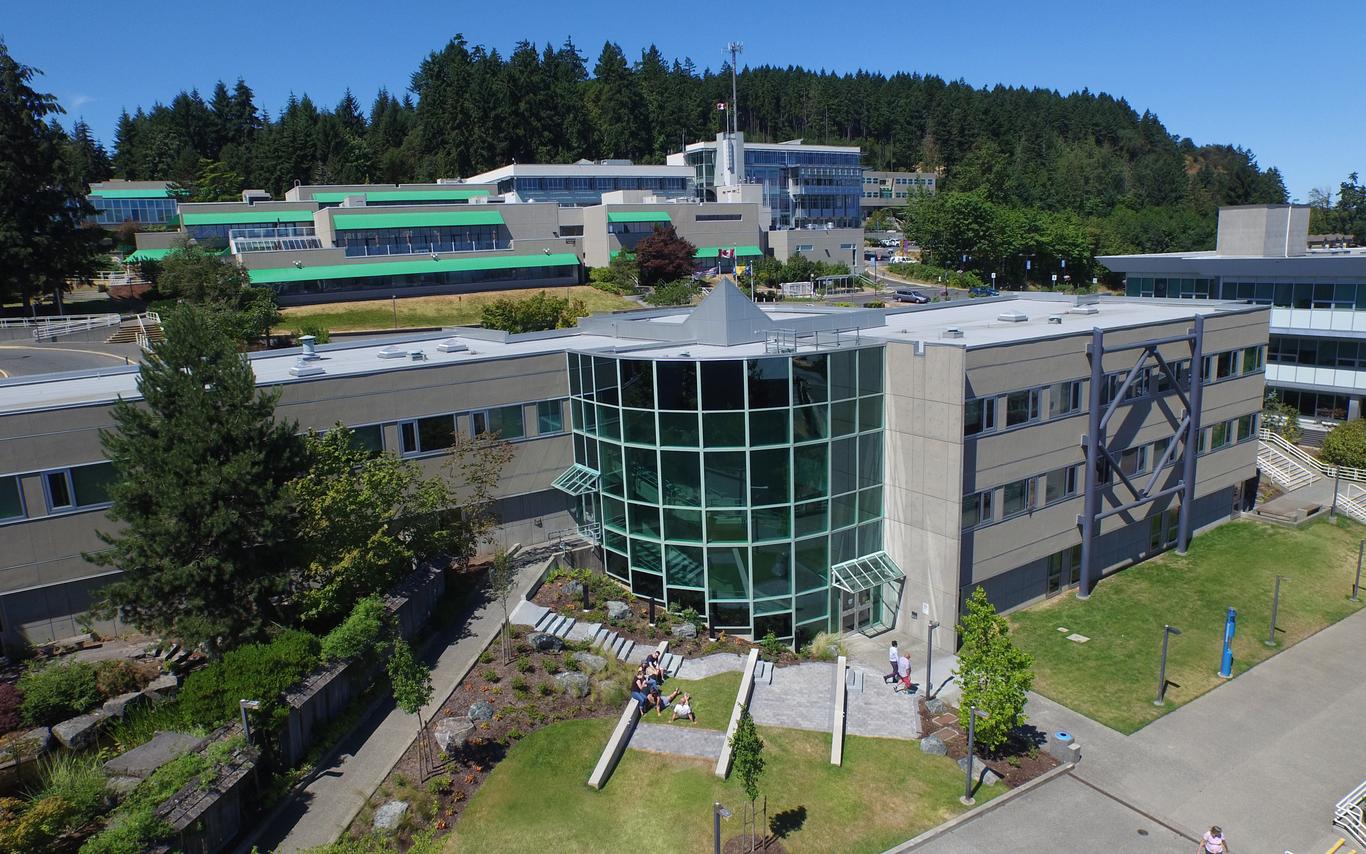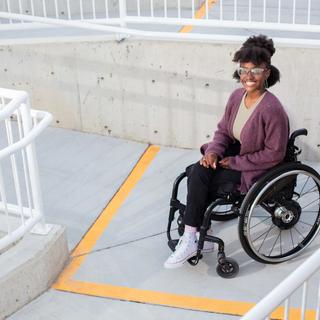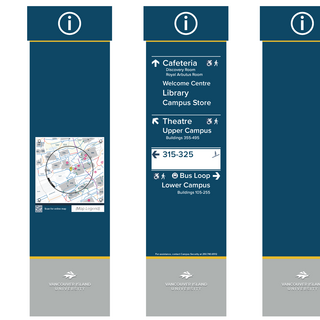Accessibility upgrades aim to make VIU buildings in Nanaimo and Duncan accessible for everyone.
Power door openers, wayfinding signage, grab bars in washrooms and plus size chairs are some of the improvements students and employees at Vancouver Island University’s (VIU’s) Nanaimo campus and the Cowichan Trades Centre are beginning to see thanks to funding from the BC Accessibility Grants Program through the Rick Hansen Foundation.
The Rick Hansen Foundation recently granted the VIU Foundation $240,000 for accessibility projects in 12 of the least-accessible buildings at VIU. The money, which comes from the BC Accessibility Grants Program through the Ministry of Social Development and Poverty Reduction, will help the institution become more user-friendly for all, explains Dr. Linda Derksen, Universal Access Committee chair.
“We have found that improvements for people with disabilities have the effect of making things easier for everyone,” says Derksen. “Power door openers make it easier for people pushing carts or parents with strollers. High-contrast signage with raised letters is meant for people who have low vision, but it also helps anyone who is trying to find their way around campus.”
Also included in these improvements are handrails on ramps, high-contrast signs pointing to accessible routes, hearing equipment at service desks, change tables in washrooms, adjustable desks and rolling workstations.
“We are making hundreds of little changes that add up to making the whole campus much more accessible for a wide range of people,” says Derksen. “About 20% of the working-age population have disabilities, but most of these are invisible. Think of things like ‘bad’ knees and hips, or illnesses like rheumatoid arthritis, multiple sclerosis, fibromyalgia, or conditions like brain injuries and vertigo. Many people who appear to be able bodied have a lot of trouble with our stairs.”
In 2018, the VIU Foundation brought the Rick Hansen Foundation to VIU to have all its buildings rated for a wide range of accessibility needs, including vision and hearing. Of those, 29 buildings met the criteria to achieve Rick Hansen Foundation Accessibility Certification. The accessibility ratings provided a wealth of information on what changes need to be made to make the buildings accessible to all. This information has been handed over to Facilities Services and Campus Development, which is integrating access improvements into routine maintenance work.
“Vancouver Island University’s commitment to accessibility is evident through having each of the 55 buildings on campus rated for accessibility with RHF Accessibility Certification,” says Brad McCannell, VP, Access & Inclusion with the Rick Hansen Foundation. “Using the information learned through the rating and implementing the recommendations with funds from the RHF BC Accessibility Grants will help ensure a campus accessible for everyone, regardless of physical ability. VIU is a true leader in accessibility."
The momentum for accessibility improvements began in 2017 when Derksen, who had a hip removed in 2012 and uses a power wheelchair, expressed her frustrations at the difficulty of getting around campus to senior administrators. The Universal Access Committee was formed in May 2018 with Derksen as its chair and the group got to work applying for grants money to make improvements. Since then, many departments on campus have been working to make their areas more accessible, including Information Technology, the Library, Human Resources, Facilities Services, Campus Development and more.

One of the first projects that was finished in summer 2019 was an accessibility map that identifies all wheelchair accessible routes, power door openers, ramps, elevator locations and issues that make mobility a challenge. The project was a research collaboration with Dr. Victoria Fast, a Geography Professor at the University of Calgary, who has a Social Sciences and Humanities Research Council Grant to investigate ways to use GIS technology for mapping accessibility. Dr. Fast’s graduate student Zachary Lamoureux collected information on every barrier on the Nanaimo campus’s steep and rugged terrain to create a first-of-its kind accessibility map, a downloadable web map and printable routes from building to building.
“The new maps help people to avoid the places on campus where barriers prevent a person using a wheeled mobility device from continuing on their path, and the places where the only route is through traffic or up a very steep hill,” says Derksen. “There are many routes where climbing the hill means going through a building and using elevator. Our new maps show these routes to people.”
VIU’s Facilities Services and Campus Development department jumped on board immediately, ensuring any scheduled renovation projects or new builds were built to Universal Design standards and prioritizing access projects in their limited budget.
“VIU is focused on making post-secondary education accessible for all and doing the work to ensure we are as inclusive as possible,” says Richard Lewis, Interim Associate Vice-President of Facilities Services and Campus Development. “It’s a myth that making buildings accessible costs ‘too much’ – it often doesn’t cost more if considered early in the design process.”
-30-
MEDIA CONTACT:
Jenn McGarrigle, External Communications Advisor, Vancouver Island University
C: 250.619.6860 | E: Jenn.McGarrigle@viu.ca | T: @VIUNews
"We have found that improvements for people with disabilities have the effect of making things easier for everyone,” says Derksen. “Power door openers make it easier for people pushing carts or parents with strollers. High-contrast signage with raised letters is meant for people who have low vision, but it also helps anyone who is trying to find their way around campus.”



